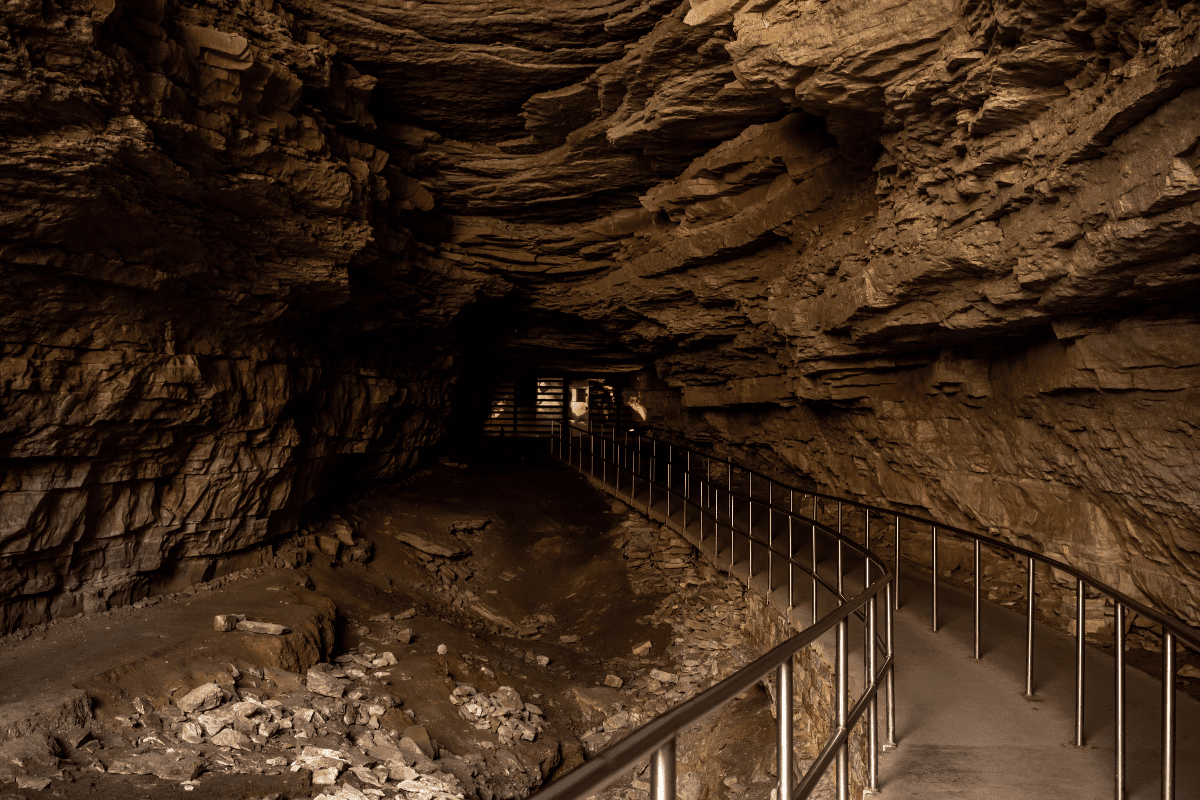Kentucky's economy has undergone a transformation that would make Colonel Sanders drop his famous bucket. From fried chicken served at a gas station to the world's largest automated package facility, the Bluegrass State has become home to corporate giants that collectively employ hundreds of thousands and generate billions in economic impact.
Understanding Kentucky's economic powerhouse status
Let's start with a number that might make your bourbon go down the wrong pipe: Kentucky attracted $6.9 billion in private investment in 2024 alone. That's not a typo. We're talking about 170 projects creating 9,425 new full-time jobs in a single year.
The state's GDP now stands at $224.42 billion, which sounds impressive until you realize that's roughly equivalent to Jeff Bezos buying Twitter… twice. But here's what actually matters: manufacturing contributes $37.78 billion to that total, making up nearly 17% of Kentucky's economic output. That's double the national average, folks.
Why location matters more than you'd think
Ever wonder why so many companies set up shop in Kentucky? It's not just the bourbon (though that probably doesn't hurt). The state sits within a day's drive of two-thirds of the U.S. population. That's like being the popular kid who lives equidistant from everyone else's house… except instead of hosting sleepovers, you're shipping millions of packages and manufacturing cars.
Kentucky employs 257,100 people in manufacturing, representing 12.5% of the workforce compared to the national average of 8.5%. The unemployment rate hovers around 4.5%, which economists consider pretty darn good. Though if you ask anyone looking for workers right now, they'll tell you it feels more like negative 4.5%.
Manufacturing giants that actually make things
Kentucky has become the nation's number one per-capita producer of cars, light trucks, and SUVs. Yes, more than Michigan. Let that sink in for a moment.
Toyota's massive Georgetown operation
Toyota Motor Manufacturing Kentucky isn't just big… it's the world's largest Toyota plant. Located in Georgetown (not to be confused with the one in D.C.), this facility employs over 10,000 workers who pump out 550,000 vehicles annually. That's roughly 1,500 cars every single day, including Christmas.
The company recently announced a $922 million investment in a new paint facility that'll reduce carbon emissions by 30%. Because apparently, making half a million cars a year wasn't keeping them busy enough. This new facility, opening in 2027, will add another million square feet to the complex. At this rate, Georgetown might need to change its name to Toyotatown.
Since setting up shop in Kentucky, Toyota has contributed over $154 million to local communities. That's a lot of little league sponsorships and library renovations.
Ford's Louisville truck empire
Ford operates two major facilities in Louisville that collectively employ over 12,500 workers. These aren't just any facilities… they're the birthplace of America's best-selling vehicle, the F-Series pickup truck. The Kentucky Truck Plant and Louisville Assembly Plant generate nearly $2 billion annually for the Louisville area.
Here's a mind-boggling stat: Ford's Louisville operations support an estimated 120,000 direct and indirect jobs statewide. That means for every person actually building trucks, there are about nine others making parts, delivering lunch, or selling fuzzy dice for rearview mirrors.
Ford recently invested $700 million creating 500 new jobs, because apparently Kentucky needs more pickup trucks. And honestly? They're probably right.
The electric vehicle revolution hits Kentucky
Remember when electric vehicles were just golf carts with delusions of grandeur? Well, Kentucky is now positioning itself as America's EV battery capital. Ford's BlueOval SK Battery Park in Glendale represents a $5.8 billion investment creating 5,000 jobs. The first battery plant starts production in early 2025, though Ford hit pause on the second plant because, well, predicting EV demand is about as easy as predicting Kentucky weather.
Overall, the state has attracted $11.7 billion in EV-related investments. That's enough money to buy every Kentuckian their own golf cart… though that would kind of defeat the purpose.
Homegrown heroes who conquered the world
Some of Kentucky's biggest success stories started right here in the Commonwealth. And no, we're not just talking about bourbon and basketball.
KFC and the empire of eleven herbs and spices
Picture this: It's 1930, and 40-year-old Harland Sanders has failed at pretty much everything. So naturally, he starts serving fried chicken at his gas station in Corbin. Because nothing says "fill 'er up" like a side of coleslaw.
Fast forward to today, and KFC employs 820,000 people globally. The parent company, Yum! Brands (formerly the less exciting "Tricon Global Restaurants"), operates from Louisville with 34,000 corporate employees. They oversee KFC, Pizza Hut, and Taco Bell, generating $7.08 billion in revenue.
Yum! Brands ranks as Kentucky's #1 employer by headquarters staff. Turns out the secret recipe included "aggressive franchising" alongside those herbs and spices.
Humana: From nursing homes to Fortune 500
Humana's story reads like a business school fairy tale. In 1961, lawyers David Jones Sr. and Wendell Cherry scraped together $2,000 to start a nursing home company called Extendicare. They pivoted to hospitals in the 1970s, then transformed into a health insurance giant.
Today, Humana is Kentucky's only Fortune 500 company, with revenue hitting $92.87 billion and nearly 50,000 employees. The company contributes $13.9 billion annually to Kentucky's GDP and generates $2.6 billion in tax revenues. That's enough to fund a lot of pothole repairs.
Texas Roadhouse: The least Texan Texas company ever
Despite the name and Willie Nelson partnership, Texas Roadhouse was born in Louisville when Kent Taylor opened the first location in 1993. Taylor had previously worked as a KFC manager, proving that Kentucky's fried food training pipeline extends beyond chicken.
The company's hand-cut steaks and those addictive rolls (you know the ones) helped it become America's largest casual dining chain by 2021. They employ 64,900 people nationwide and generated $4.35 billion in 2023 revenue. Not bad for a "Texas" company headquartered in Kentucky. It's like wearing a Yankees cap in Boston… it shouldn't work, but somehow it does.
The logistics revolution centered on Louisville
If Kentucky's manufacturing sector is the muscle, then logistics is the circulatory system. And the heart? That would be UPS Worldport.
UPS Worldport: Where packages go to party
UPS Worldport started in the 1980s handling 2,000 packages daily. Today, this facility processes over 2 million packages across 5.2 million square feet. It's the world's largest automated package-handling facility, which is a fancy way of saying "a really, really big building where boxes go zoom."
The numbers here get ridiculous:
- Direct employment at Worldport: 20,000+
- Total Kentucky jobs: 62,000 direct and indirect
- Annual payroll: $2.5 billion
- Average salary: $77,000
- Annual tax revenue: $300 million+
That last figure represents 2% of all state and local taxes collected in Kentucky. One company. Two percent. Math was never my strong suit, but even I know that's significant.
UPS has attracted over 200 other businesses to relocate to Kentucky, creating what economists call an "agglomeration effect" and what normal people call "if you build it, they will come."
Amazon and the e-commerce explosion
Amazon operates 11 fulfillment centers across Kentucky, plus a Prime Air hub in Northern Kentucky. The warehousing and storage sector has grown 32% since 2019, adding 9,500 jobs. Apparently, our collective online shopping addiction has been very good for Kentucky's economy.
The state now offers over 30 million square feet of warehouse space. That's enough room to store every Amazon box you've shamefully hidden from your spouse… with room to spare.
Bourbon: Kentucky's liquid gold
Let's talk about bourbon, because this is Kentucky and it's basically required by law. The bourbon industry generated $9.2 billion in economic impact in 2024. That's not just from sales… that's the total economic ripple effect of all those distilleries, jobs, and bourbon tourists.
Brown-Forman: The bourbon baron
Brown-Forman started in 1870 when George Garvin Brown had the revolutionary idea of selling whiskey in sealed bottles instead of straight from barrels. This was apparently a big deal back when "quality control" meant hoping the bartender washed his hands.
The company survived Prohibition with medicinal whiskey licenses (wink wink), but their real genius move came in 1956 when they bought Jack Daniel's. Today, Brown-Forman generates $4.2 billion in revenue and employs 4,700 people. Though they recently announced workforce reductions and a barrel-making plant closure, proving that even bourbon royalty faces challenges.
The bourbon boom by the numbers
Kentucky produces 95% of the world's bourbon, with 12.6 million barrels currently aging. That's a 10% increase from last year, suggesting someone's either very thirsty or very patient. The state now has over 100 licensed distilleries, a 500% increase over 15 years.
The Kentucky Bourbon Trail attracted 2.5 million visitors in 2024. These tourists don't just sample bourbon… they stay in hotels, eat at restaurants, and buy T-shirts that say clever things like "Bourbon is my spirit animal." The industry purchases 21 million bushels of corn annually, with 70% sourced from Kentucky farmers, creating a beautiful circle of economic life.
Beyond the big names: Healthcare and services
Not everything in Kentucky revolves around making things or shipping things. The state has a robust service sector that keeps people healthy, educated, and professionally busy.
The education and health services sector employs 320,200 workers, or 15.6% of the state's workforce. Major healthcare systems like Norton Healthcare (17,000+ employees) and Baptist Health provide both jobs and essential services. Though with 85 of Kentucky's 120 counties designated as Health Professional Shortage Areas, there's clearly room for growth.
Professional and business services represent the fastest-growing sector, with employment expanding 1.5 times since 2014 to reach 226,600 workers. These are the consultants, accountants, and various business professionals who keep everything else running smoothly. Or at least running.
The ripple effect: How big business impacts communities
When Ford says they support 120,000 jobs statewide, they're not exaggerating. Every direct manufacturing job creates additional positions in supporting industries. The BlueOval SK battery plant has an employment multiplier of 1.603, meaning each direct job creates 0.6 additional positions. It's like economic dominoes, but in a good way.
Corporate giving that actually gives
Kentucky's largest companies don't just extract value… they give back:
- Humana Foundation: $8 million to nonprofits since 2018
- Toyota: $154 million in local donations
- LG&E/KU Power of One: Millions for local causes
- UPS: $300 million in annual tax revenue
These contributions fund everything from education programs to community health initiatives. It's nice when corporate citizenship involves actual citizenship.
The challenges nobody likes talking about
Here's where we get real. Kentucky's labor force participation rate sits at 57%, compared to 63% nationally. That means a lot of working-age Kentuckians aren't working. And 78% of business leaders report they can't find enough workers. It's like hosting a party where you have too much food but not enough guests.
The state's per capita GDP of $50,102 ranks 44th nationally. Eastern Kentucky particularly struggles as coal employment declines 9.6% annually. State government employment has contracted 27% over two decades. These aren't just statistics… they represent real communities facing real challenges.
Business leaders cite their top concerns as:
- Government regulations (58%)
- Healthcare costs (58%)
- Economic downturn threats (55%)
- Finding skilled workers (basically everyone)
What's next for Kentucky business?
Despite the challenges, Kentucky's economic future looks surprisingly bright. The state has positioned itself as America's EV battery capital, even if the timing remains uncertain. Infrastructure investments totaling $5 billion in transportation and $2 billion in broadband provide the foundation for continued growth.
Downtown Louisville alone has 73 projects planned or underway representing $131 million in investment. The federal government kicked in $4.7 million for workforce development programs, because apparently even Washington noticed Kentucky means business.
International trade offers expanding opportunities, with exports reaching a record $40.2 billion in 2023. Though bourbon makers worry about tariffs, and let's be honest, international trade disputes could really harsh Kentucky's bourbon buzz.
The bottom line
Kentucky's largest businesses have transformed a state once dependent on agriculture and coal into a diversified economic powerhouse. From Colonel Sanders' gas station chicken to Toyota's high-tech manufacturing, from UPS's logistics dominance to bourbon's global reach, these companies prove that location, innovation, and a little Kentucky stubbornness can create lasting success.
The state faces real challenges around workforce participation, regional disparities, and economic transitions. But with $35 billion in recent private investment, a business-friendly environment, and companies that genuinely invest in communities, Kentucky's economic story is still being written. And unlike bourbon, it doesn't need aging to get better.
Whether you're a business leader, job seeker, or just someone curious about Kentucky's economy, remember this: the Bluegrass State's biggest businesses aren't just making products… they're making opportunities. Even if some of those opportunities involve convincing people that a Texas-themed restaurant from Kentucky makes perfect sense.
Now if you'll excuse me, all this talk about bourbon and fried chicken has made me hungry. Good thing I live within a day's drive of Kentucky.





